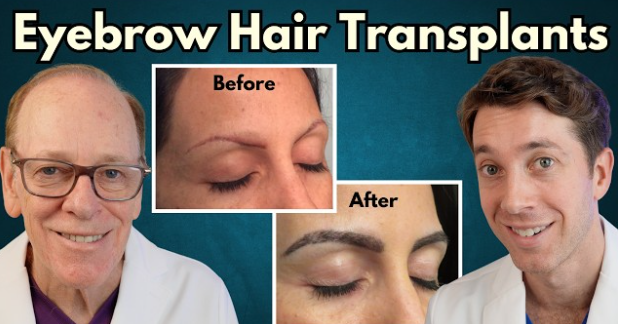Everything you need to know about eyebrow hair transplants
Eyebrow hair transplants are gaining popularity for those seeking fullness and shape. Wondering how it works and what to expect? Dive in to find out!

Do you wish your eyebrows were fuller or had a better shape? Have you considered an eyebrow hair transplant? This revolutionary procedure has become a go-to solution for many looking for a solution to sparse, over-plucked, or thinning eyebrows. In this article, we will explore how the transplant process functions, its benefits, potential risks, costs, recovery times, and maintenance. By the end of this read, you’ll have a clearer idea of whether this treatment is right for you.
Understanding eyebrow hair transplants
Eyebrow hair transplant involves relocating hair follicles from one part of the body, usually the back of the scalp, to the eyebrow area. It is performed under local anesthesia, allowing patients to remain awake and comfortable. The process is quite similar to hair transplants used on the scalp but requires a delicate, skilled approach to ensure natural results.
There are two main techniques for eyebrow transplants: Follicular Unit Extraction (FUE) and Follicular Unit Transplantation (FUT). FUE extracts individual hair follicles, which minimizes scarring and provides a natural look. In contrast, FUT involves removing a strip of skin containing hair follicles, then dissecting them for transplantation, which can be more invasive but may yield a higher number of grafts at once. This choice will largely depend on the patient's unique needs and the surgeon's recommendation.
Why opt for an eyebrow hair transplant?
There are several reasons people opt for an eyebrow hair transplant. For some, it’s a response to aesthetic desires — enhancing their appearance by achieving fuller, more defined eyebrows. Others may choose this procedure due to medical conditions, such as alopecia, which leads to hair loss.
Eyebrow hair transplants can also benefit those who have lost hair due to injury or trauma. The resulting look is more natural compared to cosmetic tattoos or pencil fillers, as real hair integrates better with existing brow hairs. It allows for greater versatility in styling and offers a long-lasting solution without the daily effort involved in the cosmetic alternatives.
What are the potential risks and side effects?
Like any surgical procedure, eyebrow hair transplants come with potential risks and side effects. While serious complications are rare, patients should be aware of possible outcomes. Common side effects include swelling, redness, and minor discomfort in the transplanted areas after the procedure. These symptoms are generally temporary and improve within a few days.
Other potential risks include uneven hair growth, ingrown hairs, and infection at the donor or transplant sites. Proper post-operative care is essential to minimize these issues. It's important to follow your surgeon's instructions for cleaning and caring for your eyebrows after surgery, which includes avoiding sun exposure and limiting physical activity.
How much does an eyebrow hair transplant cost?
The cost of an eyebrow hair transplant varies significantly based on several factors, including the location of the clinic, the surgeon's experience, and the number of grafts required. On average, patients can expect to pay between $3,000 and $5,000 for the procedure. In some cases, costs may escalate if multiple sessions are needed to achieve desired results.
Additionally, it's essential to factor in other potential expenses, such as consultations, follow-up appointments, and any required medications post-surgery. Insurance typically does not cover cosmetic procedures, so it’s crucial to budget accordingly. Seeking clinics that offer payment plans or financing options may ease the financial burden for some patients.
Recovery and maintenance after the procedure
After the eyebrow transplant procedure, recovery plays a crucial role in achieving the desired appearance. While most patients can return to their normal activities within a few days, it may take several weeks for the full effects to become visible. During the initial healing period, some scabbing and redness are common. Regularly moisturizing the area, as per your surgeon’s advice, can support the healing process.
Maintaining the new eyebrows requires patience, as transplanted hairs may initially shed before growing back healthy and full. Usually, any initial shedding occurs within the first month. Patients should avoid plucking or shaping the hair for at least six months post-transplant to allow for natural growth. Regular check-ins with your surgeon can help monitor progress and address any concerns that arise.